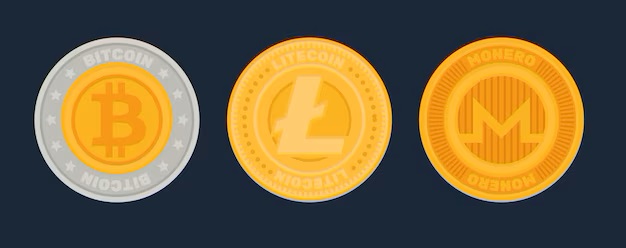Choose a reputable exchange platform that prioritizes user safety and employs robust security measures. Look for features such as two-factor authentication and cold storage options for funds. Assess transaction fees, liquidity, and customer support as part of your evaluation to ensure a smooth experience.
Utilize peer-to-peer marketplaces cautiously. Verify the identity of potential buyers or sellers through established verification processes. Protect your assets by conducting transactions in person in safe locations, or opting for escrow services that shield both parties involved.
Implement additional safeguards such as utilizing hardware wallets for storage post-transaction. This method reduces exposure to online threats. Regularly update your software and security protocols to guard against vulnerabilities. Consider using encrypted communication channels when discussing sensitive transaction details.
Monitor market trends and price fluctuations closely. Timing your transaction can significantly impact your returns. Utilize analytical tools and platforms to make informed decisions, ensuring you are always acting with full awareness of the market environment.
Choosing the Right Cryptocurrency Exchange for Your Needs
Select an exchange based on factors like security, fees, user experience, and available cryptocurrencies. Evaluate platforms like Coinbase, Binance, or Kraken using these criteria.
Security Features
Prioritize platforms with robust security measures such as two-factor authentication (2FA), cold storage for assets, and regular security audits. A history of hacks or breaches indicates potential vulnerabilities.
Transaction Fees and Limits
Compare transaction costs between exchanges, as they can vary significantly. Look for hidden fees or withdrawal limits that might affect your trading strategy. Always read the fine print regarding deposit and withdrawal terms.
Steps to Creating a Secure Account on an Exchange
Enable two-factor authentication (2FA) using an authenticator app instead of SMS for added protection against unauthorized access.
Choose a strong, unique password that consists of a mix of uppercase letters, lowercase letters, numbers, and special characters. Avoid using personal details.
Provide only necessary personal information during registration. Be cautious of sharing excessive data that isn’t required by the platform.
Verify the exchange’s security measures. Check for features like cold storage for assets and insurance policies to cover potential breaches.
Update your account regularly and review your security settings. Change your password every few months to mitigate risks.
Use a reputable email provider that supports two-factor authentication for the email linked to your trading account.
Monitor account activity frequently. Report any suspicious transactions or access attempts to customer support immediately.
Utilize a secure internet connection. Avoid public Wi-Fi when accessing your account to prevent exposure to potential threats.
How to Verify Your Identity Safely During the Selling Process
Utilize reputable platforms that comply with KYC (Know Your Customer) regulations. These platforms implement identity verification measures to ensure safety for both buyers and sellers.
Steps for Secure Verification
- Register on a recognized exchange or brokerage that requires identity checks.
- Prepare necessary documents: government-issued ID, proof of address (utility bill, bank statement).
- Use a secure internet connection. Avoid public Wi-Fi to prevent unauthorized access.
- Upload documents directly through the platform’s secure channels; do not share them via email.
Enhancing Your Security
- Enable two-factor authentication (2FA) to add an extra layer of safety to your account.
- Be cautious of phishing attempts. Always verify the website URL before entering personal information.
- Consider using a VPN to mask your IP address and enhance privacy while accessing your account.
- Regularly monitor your account for any suspicious activity and update your security settings as needed.
Following these precautions can help you manage your identity verification process without unnecessary risks. Always prioritize platforms that demonstrate a commitment to data protection and user privacy.
Understanding Trading Fees and Their Impact on Your Earnings
Trading fees can significantly affect your profits. Check the fee structure of the platform before engaging in transactions. Most exchanges charge a percentage of the total trade value or a fixed fee per transaction. Be aware that fees vary widely between exchanges and can impact your earnings over time.
Types of Fees
Common fee categories include maker fees, taker fees, withdrawal fees, and deposit fees. Maker fees apply when you add liquidity to the market by placing a limit order, whereas taker fees are incurred when you match an existing order. Withdrawals typically incur additional costs, so factor these into your calculations. Some platforms may charge for deposits, which should also be evaluated.
Calculating the Impact
To understand the true cost of your trades, calculate how fees reduce your potential profit. For instance, if you execute a trade worth $1,000 with a 1% fee, you lose $10 right off the bat. If your investment doesn’t appreciate beyond that initial loss, you won’t see any net gain. Prioritize exchanges with lower fees for frequent trading to maximize earnings.
Strategies for Protecting Your Bitcoin Before Sale
Use a hardware wallet to store your assets offline. This minimizes the risk of online hacks and malware attacks.
Enable two-factor authentication (2FA) on your accounts associated with digital currency exchanges. This adds an extra layer of security.
Regularly update software related to your wallets and exchange accounts. Keeping software current helps protect against vulnerabilities.
Consider using multisignature wallets for added security. This requires multiple private keys to authorize a transaction, reducing the risk of unauthorized access.
Conduct thorough research on exchanges. Prioritize those with a strong reputation for security and user trust.
Monitor your accounts for unusual activity. Set up alerts for any login attempts or transactions to detect potential breaches promptly.
Implement a secure backup strategy for your wallet’s private keys. Store backups in a safe location, preferably disconnected from the internet.
Limit sharing sensitive information regarding your assets. Be cautious on communication platforms to avoid phishing attempts.
Use a secure connection when accessing online wallets or exchanges. Avoid public Wi-Fi and consider employing a VPN to encrypt your data.
Educate yourself about common scams and deceptive practices. Awareness can significantly reduce the risk of falling victim to fraud.
Safe Methods for Withdrawals After Selling Bitcoin
Transfer your funds to a reputable bank account via a recognized exchange. Verify the exchange’s security features, such as two-factor authentication, to protect your assets during the transaction.
Consider utilizing a peer-to-peer trading platform. These allow direct transactions with buyers, reducing reliance on third parties. Ensure you select a platform known for its safety measures and user reviews.
Withdraw using prepaid debit or credit cards provided by exchanges, which adds an additional layer of anonymity and security. Make sure the provider has a solid reputation for safeguarding transactions.
Cryptocurrency ATMs present another option for cash withdrawals. Locate a nearby kiosk, keeping in mind the fees charged and the limits on daily transactions. Always confirm the machine’s legitimacy and security features before use.
Implement security protocols while withdrawing. Use strong passwords, monitor account activity, and avoid public Wi-Fi connections. This minimizes the risk of unauthorized access during the withdrawal process.
Regularly update your software and apps related to cryptocurrency. This ensures you have the latest security patches and reduces vulnerability to potential threats.
Consult with a financial advisor who specializes in cryptocurrency investments, ensuring your withdrawal strategy aligns with your financial goals and minimizes risks.
Q&A: How to sell bitcoin
What is the easiest way to sell crypto for fiat if you already hold btc in a mobile wallet?
The easiest way to sell crypto for fiat is to send bitcoin to a centralized exchange, then choose sell btc and withdraw funds to your bank account, completing the cash out bitcoin process without extra steps.
How can a bitcoin atm help someone who wants to sell bitcoin directly for cash on the spot?
Using a bitcoin atm lets you choose sell bitcoin using the machine, scan your wallet address, and receive a redemption code to pick up fiat money at the kiosk—an instant off-ramp if you want to sell bitcoin for cash.
Why do many users prefer the moonpay app and sell feature when they need to cash out your crypto quickly?
Moonpay and cash out directly functions allow users to move bitcoin and other cryptocurrencies to the provided moonpay wallet address, then cash out your cryptocurrency in minutes, sending fiat currencies straight to a linked bank.
What factors determine the right moment to sell your bitcoin and lock in gains?
Check the current bitcoin price, compare it to your target, and assess whether you need access to cash; deciding at the right moment to sell balances market conditions with personal liquidity needs.
How much flexibility do you have if you need to sell as little as 0.001 btc and still receive cash directly?
Most exchanges and bitcoin atms support micro sales, so you can sell as little as the minimum network fee allows and still cash out btc into fiat currencies without penalties.
What precautions ensure a secure bitcoin transaction when you sell crypto for cash?
Always double-check the wallet address, enable two-factor authentication on your crypto exchange, and verify that the off-ramp to sell funds to your bank account matches your name to prevent fraud.
Why is a wallet address required even when you plan to cash out btc through a bitcoin atm?
The machine needs to know where to receive bitcoin from your wallet, so you scan a QR code wallet address before the atm locks the exchange bitcoin rate and dispenses cash.
How does a peer-to-peer platform offer another way to sell bitcoin for fiat currencies without centralized custody?
A peer-to-peer bitcoin exchange matches people who want to sell crypto with buyers, holds the bitcoin in escrow, and releases cash on moonpay or bank transfer once both parties confirm the trade.
In what situation would cash app be the best bitcoin off-ramp for everyday users?
Cash app integrates buy and sell bitcoin using a familiar payments interface, so beginners can sell bitcoin for usd and withdraw cash to a debit card within one seamless app.
What trading tips help crypto investors choose between holding or executing crypto sell transactions in 2025’s volatile market?
Monitor bitcoin trading volume, set limit orders on your crypto exchange, and diversify off-ramps—such as using bitcoin atms or the moonpay app—to ensure you can easily sell when volatility spikes.






